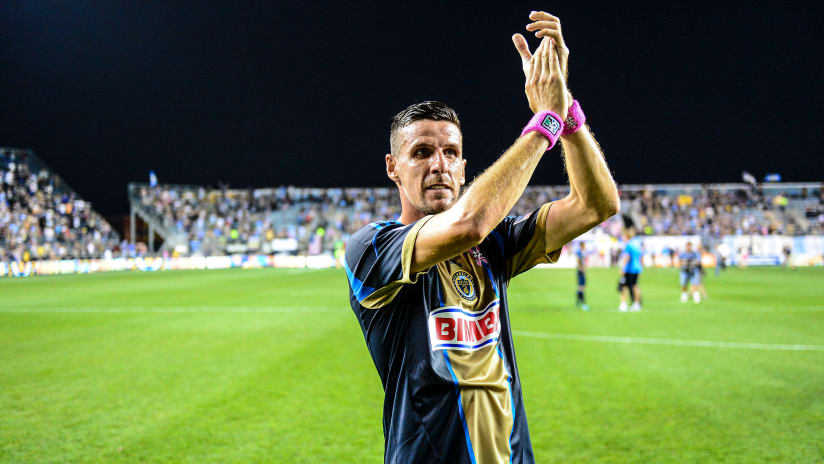In his first and last two seasons as a Philadelphia Union player, Sebastien Le Toux wore number 9, the classic striker’s numeral. When he returned to the club after a year split between Vancouver and New York, his former understudy, Jack McInerney, claimed the nine. Le Toux opted instead for 11, a number traditionally worn by wingers.
Shirt numbers in soccer have a long and complex history. Initially, they were worn in lieu of player names, and played an important role signaling position. In the days of 2-3-5 formations (what! I know!), the front five ran from numbers seven to 11, with the central player wearing nine. Once the stodgy traditionalism of the formalized game’s English roots began to waver, the numbers lost their sense of ordered location on the pitch -- six and eights were in midfield, but seven remained high and wide -- but came instead to describe position in terms of role on the team. Tens, for instance, were advanced midfielders, having dropped from the front line in the 2-3-5 into an inside forward role in Arsenal’s famous W-M shape, and finally into a central midfield role.
Although the days of shirt numbers as reliable positional markers are gone (the Union’s goalie is not number one, but number 18; and the club’s single-season scoring record-holder remains number 17.), the roles that those numbers represent retains prestige for many of today’s players. This is why McInerney wanted to wear number 9: owning that shirt is validation and signaling: I am this team’s main goalscorer.

One of the most impressive aspects of Sebastien Le Toux’s time in a Philadelphia Union jersey is that he transitioned between the out-and-out striker’s role and the winger/provider role. In his four seasons as a number nine, Le Toux collected 35 goals and 31 assists. In his two seasons wearing 11, he notched 15 goals and 19 assists. In other words, he may have been more of a goalscorer as a nine and more of an assist man as an 11, but he was always a combination of both; he was just an incredibly productive attacking player no matter where he played and what number he wore.
But, in the end, it’s important to remember that the club’s all-time leader in goals and assists wore both numbers, because as much as he wanted to be a striker, he was willing to play whatever role needed to be filled.
Le Toux cared more about what was on the front of his shirt, where the Union crest is sewn above the heart.













